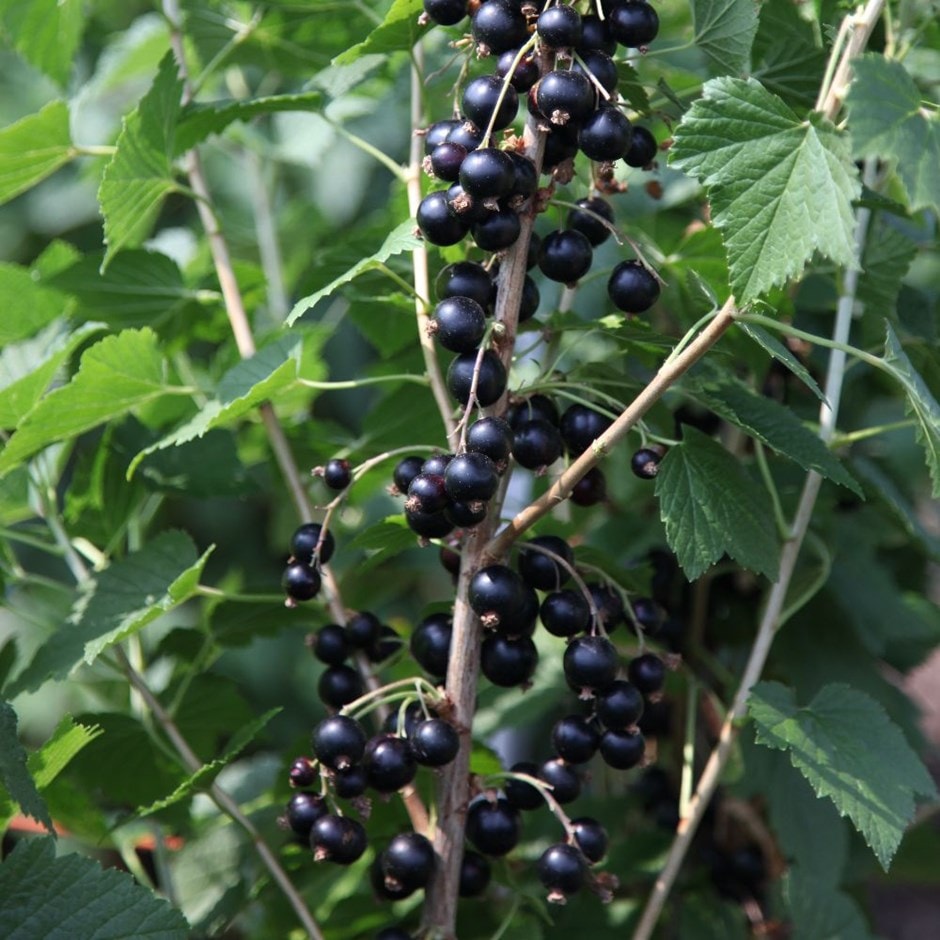blackcurrant 'Big Ben' (PBR)
blackcurrant
- 3 litre pot
- £21.99
- available to order from spring
- 2 + 1 FREE 3 litre pots
- £43.98 £14.66 each
- available to order from spring
Delivery options
- Standard £5.99
- Position: full sun or partial shade
- Soil: moderately fertile, moist but well-drained soil
- Rate of growth: average
- Hardiness: fully hardy
Blackcurrant 'Big Ben' can produce a bumper crop of up to 9kg (20lbs) on mature bushes from mid-July. The huge fruits are more than double the size of your regular blackcurrant and as the sugar/acid balance is just right, they have an outstandingly delicious taste.
Usually ready to harvest from mid-July, the fruits have soft, shiny skins and are particularly high in anthocyanins, which is a natural antioxidant.
Usually ready to harvest from mid-July, the fruits have soft, shiny skins and are particularly high in anthocyanins, which is a natural antioxidant.
When planting, space plants 1.5m (5ft) apart in well-prepared, weed-free soil enriched with well-rotted compost or manure. Potted plants can be planted at any time of year, provided the soil isn't frozen or waterlogged. Set young plants slightly deeper than they were in the nursery pot to encourage new shoots from the base.
Keep plants well-watered in dry spells, especially in their first year. Mulch in spring with well-rotted organic matter to conserve moisture and suppress weeds. Feed with a balanced fertiliser in early spring and again after harvest to support next year’s crop. Netting, or growing within a fruit cage, helps protect developing fruit from birds.
Once the plant has reached flowering maturity, remove about a third of the oldest stems at the base to maintain an open shape and promote new fruiting wood—do this in winter. Harvest blackcurrants once they’ve ripened fully, usually in mid to late summer, picking whole strigs when fruits are dark and glossy.
Keep plants well-watered in dry spells, especially in their first year. Mulch in spring with well-rotted organic matter to conserve moisture and suppress weeds. Feed with a balanced fertiliser in early spring and again after harvest to support next year’s crop. Netting, or growing within a fruit cage, helps protect developing fruit from birds.
Once the plant has reached flowering maturity, remove about a third of the oldest stems at the base to maintain an open shape and promote new fruiting wood—do this in winter. Harvest blackcurrants once they’ve ripened fully, usually in mid to late summer, picking whole strigs when fruits are dark and glossy.
